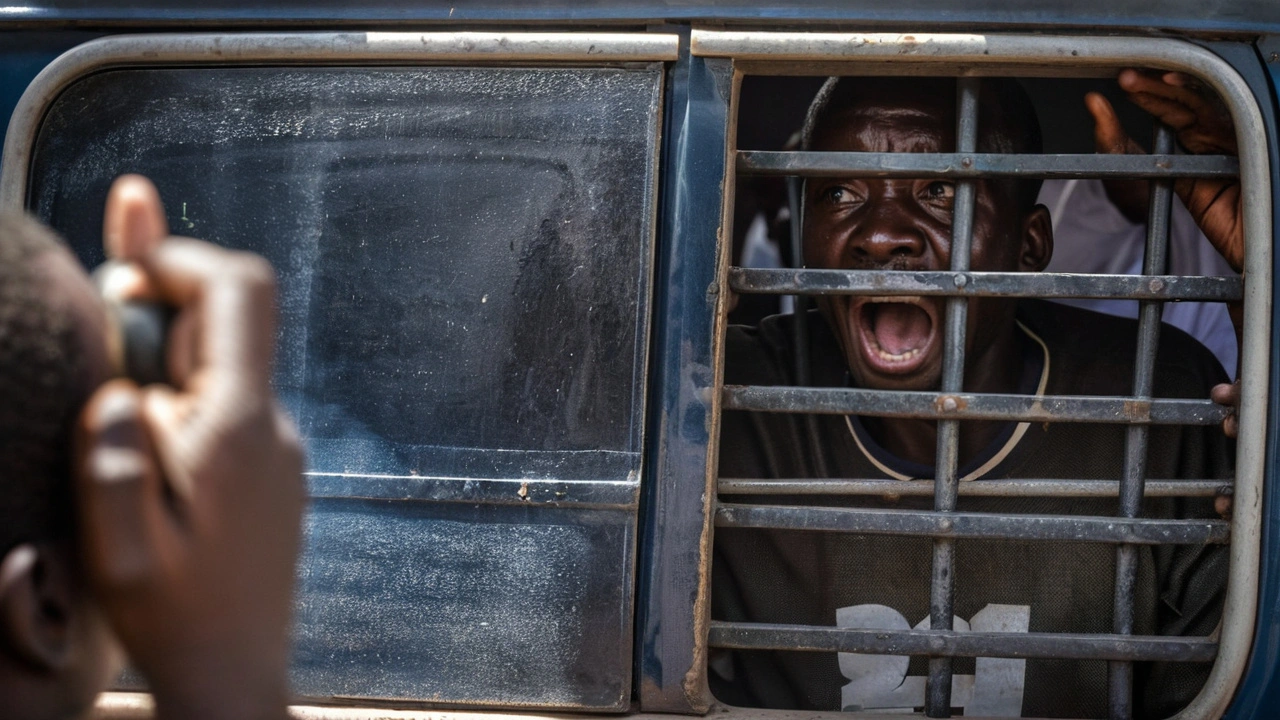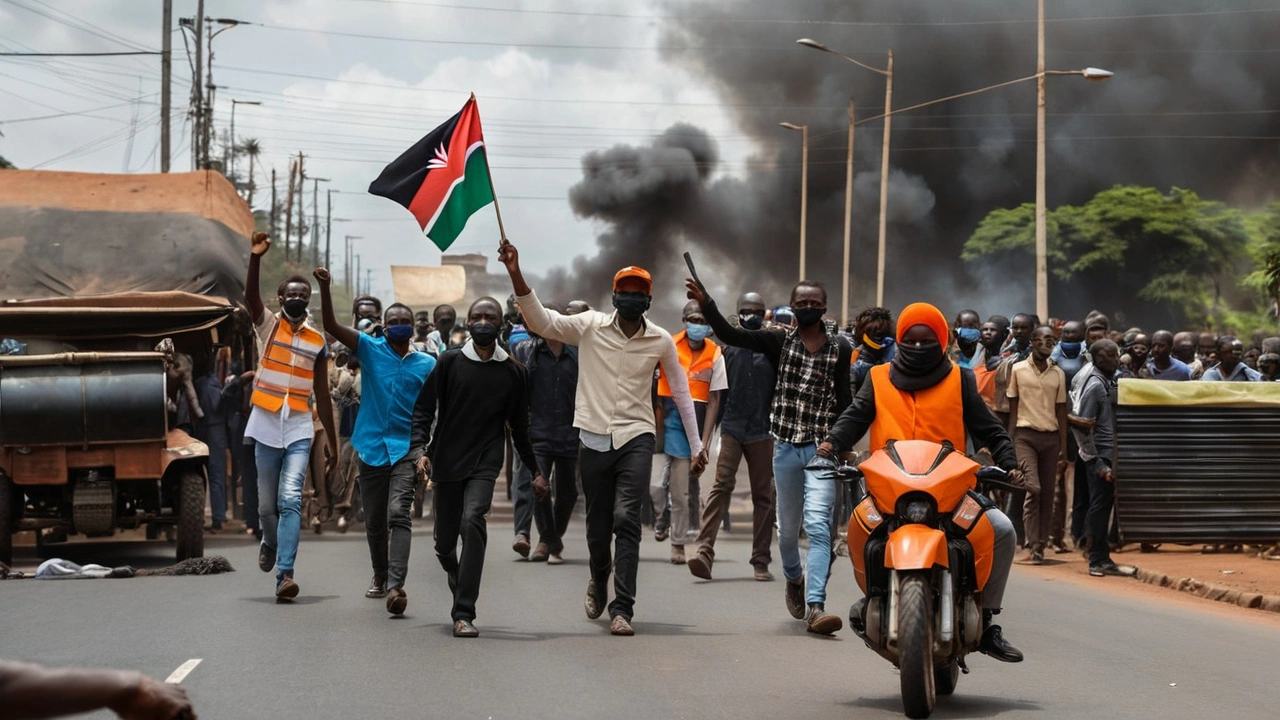The Unyielding Spirit of Kenya's Youth
Kenya, a country often described as the economic hub of East Africa, is currently experiencing a wave of antigovernment protests unlike any seen in recent years. These demonstrations have been fueled by profound discontent with rampant corruption, misgovernance, and an unpopular economic reform proposed by President William Ruto's administration. The youth of Kenya, equipped with modern technology and bolstered by digital activism, have risen as the forefront leaders of this movement.
The catalyst for these protests can be traced back to a contentious finance bill aimed at generating $2.7 billion in revenue. The bill was seen as a measure to shore up the country's finances but sparked widespread outrage among Kenyans. Public perception quickly positioned the bill as part of a broader pattern of economic mismanagement and systemic corruption. Despite attempts by Ruto’s government to placate the public through dismissals of certain cabinet secretaries and the introduction of austerity measures, the anger and frustration remained palpable on the streets.

Unwavering Protests Despite Repression
From the sprawling urban centers to the rural heartlands, protests have become a daily occurrence. The battlegrounds are filled not just with the shouts and chants of the demonstrators but also with the haunting echoes of conflict between the public and the authorities. Young protesters have not shied away from making their voices heard, even in the face of severe repercussions. Reports of police using excessive force are rife; rubber bullets, tear gas, and live ammunition have become all too common in attempts to disperse the massive crowds.
The brutality has come with a grave toll. Since June, over 50 people, predominantly young men and women, have lost their lives in the struggle for a more transparent and accountable government. One particularly heart-wrenching incident was the death of 12-year-old Kennedy Onyango, a schoolboy who was shot during a demonstration in Kajiado County. His death has galvanized the movement further, becoming a symbol of the costs borne by citizens in their quest for justice and governance reform.

Digital Activism and Organizational Prowess
What sets the current protests apart is the strategic use of digital platforms. The internet, especially social media, has become a powerful tool for the protesters. Information about demonstrations, police tactics, and government actions are disseminated rapidly, keeping the momentum alive and coordinating efforts occasionally across different regions. The youth have found innovative ways to make their demands heard, engaging in hashtag campaigns, live streaming protest activities, and creating visual stories through platforms like Twitter, Facebook, and Instagram.
The technological savviness of these young protesters has not only helped in organizing large-scale movements but has also captured the attention and solidarity of the international community. This global awareness pressures the Kenyan government to address the grievances rather than merely attempt to suppress them. It also amplifies the voices of those who have lost loved ones in the fight for their rights, ensuring that their sacrifices are not forgotten.
Government's Concessions: Too Little, Too Late?
In an effort to quell the mounting discontent, President Ruto’s administration has made several concessions. Some cabinet secretaries, accused of corruption and inefficiency, have been shown the door. Proposed austerity measures aim to alleviate the economic strain on the poorest segments of society. However, these actions appear to be seen by the public as too little, too late. The core demands of the protesters remain unmet: substantial reforms in governance and a robust crackdown on corruption.
The anger directed at President Ruto himself is also significant. Many view his leadership as emblematic of the broader issues plaguing Kenyan politics. The call for his resignation represents a deep-seated frustration with a political system that has failed to deliver on promises of development and equity. The protesters argue that unless there are tangible changes, including the stepping down of those in power, the cycle of corruption and mismanagement will persist, undermining the country's potential.

The Future of Kenya's Protest Movement
As the protests sweep across the nation, the resolve of young activists remains unshaken. They continue to mobilize, strategize, and protest despite the violence and loss. The movement has achieved significant public backing and shows no signs of weakening. Experts believe that if the government does not take substantial steps to meet the demands of these young leaders, the protests may very well become a permanent feature of Kenya’s political landscape.
The resilience displayed by these protesters speaks to a broader awakening within Kenyan society. An increasing number of citizens are realizing the power they possess collectively and the importance of holding their leaders accountable. For the youth, this protest represents not just a response to immediate issues but a fight for their future, one they believe is worth any price.
In the coming days and months, the world will watch as the story in Kenya unfolds. The bravery, determination, and demands of its youngest citizens may very well chart the course of the nation’s future, ensuring that the voices once considered silent are heard loud and clear.


Rachel Marr
July 25, 2024 AT 19:54It's inspiring to see young people stand up like this-no matter where they're from. I remember watching livestreams from Nairobi last week and just being in awe of how organized they were. No violence, just signs, songs, and solidarity. The fact that they’re using tech to bypass censorship? Brilliant. Hope the world keeps paying attention.
This isn’t just about a finance bill. It’s about dignity. And honestly? We could learn a lot from them here in the States.
Kasey Lexenstar
July 26, 2024 AT 06:44Oh look, another ‘youth uprising’ where the kids get teargassed and suddenly everyone’s a human rights hero. Meanwhile, the same kids who are out here chanting ‘Ruto must go’ are the ones who voted him in two years ago. Wake up. Democracy isn’t a TikTok trend.
And don’t get me started on the ‘digital activism’ nonsense. You think posting a hashtag changes anything? Go protest in a country where the internet isn’t a luxury. Real change doesn’t come from memes.
Trevor Mahoney
July 26, 2024 AT 15:17Let me tell you something nobody else will-this isn’t just about corruption. It’s a coordinated destabilization effort. You think the U.S. State Department and NGOs aren’t funding these protests? Look at the timing. Right after the IMF deal. Right after China started investing more in East Africa. The same playbook: fund youth groups, push hashtags, create chaos, then swoop in with ‘stabilization.’
They’re using the death of that 12-year-old boy as a propaganda tool. That’s not justice-that’s psychological warfare. And the media? They’re complicit. Every time they show those teargas clouds, it’s a signal to the next wave of protesters. It’s not spontaneous. It’s engineered.
And don’t tell me it’s ‘grassroots.’ Grassroots don’t have professional PR teams, encrypted apps, and foreign donors with LinkedIn profiles. This is regime change, disguised as democracy.
Jitendra Patil
July 27, 2024 AT 05:04What a joke. Kenya’s youth are being manipulated by Western media and NGOs who want to undermine African sovereignty. You think these kids care about corruption? No. They care about free iPhones and Instagram likes. The real problem? Lazy leadership, yes-but also lazy citizens who think protesting is a hobby.
And now you want us to believe that a 12-year-old boy’s death is the spark? Please. We’ve had children die in road accidents because of bad infrastructure. No one cried then. Now? Suddenly it’s a national tragedy because a foreign outlet posted a photo.
Kenya doesn’t need protests. It needs discipline. It needs fathers to teach sons to work, not chant. It needs schools to teach responsibility, not rebellion. This isn’t freedom-it’s anarchy dressed in hoodies.
Michelle Kaltenberg
July 27, 2024 AT 16:42Let me just say-this is one of the most profoundly moving, historically significant moments I’ve witnessed in my lifetime. The courage. The clarity. The sheer moral weight of these young people standing in the face of live ammunition. I am weeping. I am humbled.
And yet-I must say, as someone who has studied global movements since the 1960s-this is the most beautifully orchestrated civil resistance since the Velvet Revolution. The hashtag #RutoMustGo? Masterful. The livestreams? A triumph of truth over tyranny.
And to those who say it’s ‘foreign-funded’? I say this: if justice is foreign, then so is dignity. And if accountability is a Western concept, then God help us all.
Let us not forget: when the world looks at Kenya, it will not remember the bullets. It will remember the songs. The unity. The unbroken spirit of a generation that refused to kneel.
And yes-I’ve signed the petition. I’ve donated. I’ve emailed my senator. This is not over. Not by a long shot.
Jared Ferreira
July 28, 2024 AT 12:19I don’t know much about Kenyan politics, but I’ve seen videos of these protests. The kids are calm. They’re holding signs. They’re singing. And the police? They’re throwing gas and bullets. That’s not a protest. That’s a massacre.
Why is it so hard for governments to listen? What’s the point of having a voice if you get shot for using it?
I just hope they stay safe.
Kurt Simonsen
July 29, 2024 AT 01:19Look. I get it. The youth are angry. But let’s be real-this is what happens when you raise a generation on TikTok and cancel culture. No discipline. No respect for authority. Just rage wrapped in a hoodie.
And don’t even get me started on the ‘12-year-old martyr’ narrative. 😔💔
Every time a kid dies in a protest, someone turns it into a viral moment. It’s not tragedy. It’s content. It’s engagement. It’s a business model.
Meanwhile, the real issues-education, jobs, infrastructure-are still rotting. But hey, at least we got a trending hashtag. 🤷♂️
And yes-I’m not saying the government’s clean. But this? This is performative outrage. And it’s not going to fix anything.